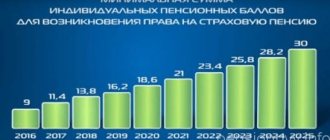Tanzania
Which countries do not have old age pensions? The list opens with the state of Tanzania. This East African country has absolutely no government or social programs to provide for the elderly. The majority of residents are below the poverty line, and mortality is quite high in all age groups of the population. Only five percent of older Tanzanians have the privilege of staying at home and living off their children and grandchildren. And those whose relatives cannot or do not want to support the elderly, or those elderly citizens who, unfortunately, buried children, have to continue working until their death. Thus, 95% of Tanzania's elderly population is forced to work.
But not everyone has even this privilege, because it is extremely difficult for a frail old man to keep his job if there are a lot of unemployed youth around in the prime of life. As mentioned above, there are no social protections for the elderly. That’s why those who were fired because of their age take on any job, even under the most slavish conditions. Many work for a piece of bread and a bowl of stew.
Which countries do not pay pensions?
The list of countries that have no pension provision or only a partial state program is small. At the same time, the number of pensioners who do not receive financial assistance from the state amounts to hundreds of millions. Pensions in different countries, which we will talk about in the article, are so small that they start from 3 dollars.
Countries where pensions are not provided for all citizens:
The Ministry of Labor has made new amendments to the procedure for paying pensions. Who will be affected by the changes?
- Tanzania;
- Honduras;
- Iraq;
- China;
- Pakistan;
- Vietnam;
- India;
- Nigeria;
- Afghanistan;
- Thailand.
Pensioners in Honduras and Tanzania do not receive any help from the state at all, so the elderly are forced to work until their death in order to somehow exist. 95% of older people live in poverty, but the government is not taking any steps to improve the situation. Only small payments are received by law enforcement agencies and the military upon reaching the age of a pensioner.
A similar picture occurs in Nigeria and Iraq, where life expectancy is at its lowest point. Old people do not receive help from the state; they survive only from the funds received from their work.
If we talk about Afghanistan, the situation there is even sadder, because social benefits are completely absent, and the average life expectancy is 45 years. The vast majority of citizens are below the poverty line.
Iraq
Most often, countries that do not pay old-age pensions have the lowest life expectancy. This is exactly the situation in Iraq. Here, too, there are no government benefits for the elderly, so 80% of residents do not even live to be 70 years old. Out of two hundred countries in the life expectancy ranking, Iraq ranks 136th. Of course, such a low rate is contributed not only by the lack of old-age pensions, but also by the low level of medical care, constant martial law and unsanitary conditions.
Only those elderly people who worked in the oil industry or in the public service can count on pensions here, but only on the condition that the employee made contributions to his future pension for ten years before ending his working career due to old age. If an elderly person does not live to receive payments, the state does not return the amount of contributions even to relatives.
Botswana
The pension system in the country appeared in 1996, under which residents can claim fixed payments from the state budget and pensions based on employer payments. Organizations rarely comply with the requirement to pay social tax for employees every five years. Because of this, 84% of employees of private companies can only count on a minimum pension of 220 pula (1,400 rubles). And the minimum retirement age here is 6 months higher than the average life expectancy.
Other countries where not all categories of citizens can count on a pension include Vietnam, the Philippines, Iraq, Nigeria, Iraq, Pakistan, and Tanzania.
Afghanistan
According to the results of the British AgeWatch rating, which was aimed at identifying the best places to live for older people and pensioners, Afghanistan was recognized as the worst place. This is not just a country where there is no old age pension. There is practically no old age here, because the average resident of the state lives to a maximum of 45-50 years. Those who managed to overcome this milestone and live, for example, to 60 years old, will most likely die of starvation, unable to fight and work for the export industry.
External military conflicts, an ongoing civil war, a high crime rate, total illiteracy, poverty, drug trafficking - these are what can be observed in modern Afghanistan. There are no social programs here at all. About 40% of the country's residents are unemployed. The extreme level of economic poverty does not imply the creation of any benefits, benefits or payments.
Pakistan
What other countries do not have an old-age pension at all? Pakistan is also on this list. As in Iraq, any willing Pakistani, being young and able-bodied, has the right to save money for his old age by paying contributions. As in Iraq, you need to start doing this 10 years before retirement. But if in Iraq, as mentioned above, workers in prestigious professions can count on a pension, then in Pakistan only those who “bought a pension” for themselves can count on a pension. Why do old people need to make contributions to their old age through contributions to the state, and not save on their own, for example, in a piggy bank? The point here is the fear of being robbed.
Although, when saving independently, an elderly person does not risk losing all his deposits in the event of an unexpected death, he is at risk of losing money during his lifetime. Theft rate in Pakistan is very high. Anyone can easily rob a poor, lonely old man or woman. Thus, in Pakistan, a country that does not provide old-age pension, it is beneficial to save money for your pension yourself by paying contributions to the government.
The trouble in many Asian countries is that they have a predominantly male workforce, and most women are housewives all their lives. Of course, they do not officially work anywhere, so they cannot provide themselves with social protection in old age.
How much do pensioners earn in different countries of the world?
The size of the pension in different countries is completely different. As is commonly believed, the highest pensions are in those countries where the standard of living of pensioners and all citizens in general is higher. Denmark currently occupies the leading position in the ranking of the highest pensions in the world.
Pension table in European countries:
- Denmark is the most comfortable place for retirees to live. The average pension there is two thousand eight hundred dollars a month. The largest pension in the European Union. In addition to cash payments, the state provides pensioners with a number of benefits and decent benefits. The state purposefully does everything to ensure that pensioners can provide themselves with everything they need for as long as possible on their own, because living in pensioners’ homes is also fully paid for by the state. There is an opinion that pensioners in Denmark are better off than many working people.
- Finland is the second country in terms of quality of provision for pensioners. However, the maximum number of pension payments depends directly on a particular citizen. The size of the pension is very significantly influenced by how many years a citizen worked in one place, how long he continued to work after reaching retirement age, etc. however, if a citizen does not reach the minimum payment, then the state pays him extra. On average, pension payments in Finland are one thousand nine hundred dollars per month.
- Norway. This country has a very high standard of living in general, but also high taxes. Norway is also considered to have the highest retirement age. But upon achieving it, the pensioner receives a number of benefits and benefits. On average, if converted to rubles, Norwegians receive a pension of about fifty thousand per month.
- Czech Republic. In this country, retirement is set quite early. Despite this, the amount of payments is sufficient for pensioners to live a full life. The pension in the Czech Republic is $1,000 per month.
- Germany pays payments to all its citizens, including guests of the country who are constantly working on its borders. Pensioners are provided with various benefits and payment for services at the expense of the state. The pension is eight hundred euros.
- For French pensioners, the payment format is no different from other European countries; the pension also depends on the number of years of work. On average, if translated into rubles, a minimum French person receives a pension of twenty thousand rubles.
As the ranking of the highest pensions shows, pensions abroad cannot be compared with Russia. Russia, with its twelve thousand on average, was not even close to this. Despite the fact that the number of pensioners in Russia is significantly less than in many of the above-mentioned European countries.
Nigeria
We continue to look at which countries do not have old-age pensions. The same situation as in Iraq and Pakistan is with the elderly people of the state of Nigeria. Unlike most West African countries, it pays a pension to those who work in any formal job. Unfortunately, however, of the eighty million Nigerian workers, only 6 million are employed in the formal services. All others can receive a pension only on the basis of their own contributions to the state. This must be done within 10 years before the expected receipt of pension payments. However, just a decade ago, elderly Nigerians did not have any pensions, even from their own contributions. Therefore, we can say that in this country the situation with social payments is developing in the right direction.
Pension in Ukraine
The pension system of Ukraine is going through a period of reform. The current scheme involves contributions to the pension fund of 34% of the salary (this is the highest figure in the world). The retirement age began to gradually increase in 2011. In 2015, Ukrainians could stop working upon reaching 60 years of age.
It’s becoming more difficult for women; by 2021, they plan to equalize their retirement age with men’s, raising it from 55 to 60. In 2015, the distribution was as follows: women born before March 31, 1958 retire at 56.5 years old; April to September 1958 - at 57 years old, from October 1958 to March 1959 - at 57.5 years old.
In the AgeWatch index list for 2015, Ukraine ranks 73 out of 96. In 2015, the average pension in the country was $52 (at the exchange rate at that time - about 3,000 rubles). In 2021, the minimum pension in the country remained approximately the same - 1,074 hryvnia, or 2,768 rubles. The maximum amount is limited by law - 10,740 hryvnia (about 28,000 rubles).
- Old age pension in China Wikipedia
- Old-age insurance pension: what is it, who receives it, amount in 2021
- When did old-age pension appear in Russia?
- How to find out the size of the pension on the State Services website in 2021?
India
What other countries do not have old-age pensions? India is included in this list because only 12% of the population can count on government support after retirement due to old age. These are those who have worked all their lives in public services. This is not to say that these lucky ones get a lot. In terms of our currency, this is only 180 rubles per month. However, against the backdrop of general poverty, especially among the eternally hungry, begging old people, this money allows us to have some kind of food for lunch.
Note that India also occupies one of the last places in life expectancy rankings. Only wealthy Indians or villagers who grow food in the fields can live to be 70-80 years old. To be fair, it must be said that individuals live here to be 100 years old, but there are only a few of them. Such old people survive without pensions due to their ascetic lifestyle, religious hunger and ability to meditate.
Countries that don't pay pensions at all
There are also countries where they do not pay pensions at all, to anyone. Not ordinary citizens, not government officials, not the military, not the police. These are the Philippines, Tanzania, Iraq, Kenya and a number of other countries.
How do old people live in these countries? There they are fully supported by their relatives - children and grandchildren. If a person is lonely and for some reason, he has no relatives, then he can be provided with shelter in a community (religious, charitable, etc.), but the conditions there are not the best.
Finally, I want to share my conviction about state pension support. Even if it exists in the country now, there is no guarantee that the situation will not change in ten years (the retirement age, the principle of calculation and payments, etc. will not change). The quality of life in old age should be taken care of even in youth. As people joke, rely on government support, but don’t make a mistake yourself.
China
When answering the question of which countries do not have old-age pensions, China should also be mentioned. As in India, of the entire population of this huge country, only government employees can count on a pension. It happens that in the case of long service or any outstanding achievements, the owners of large companies assign a long-service pension to their elderly employees on their own. But these, of course, are isolated cases. This situation is not fixed at the state level. Therefore, the Chinese are doomed to grow old in poverty, and they most likely manage to live to gray hairs only thanks to knowledge of Eastern philosophy, meditation and compassionate relatives.
What is the reason for this in such an economically developed country as China? Most likely, the state does not benefit from long-livers at all. Overpopulation in China is a well-known problem, so the authorities of this country are not going to support old age in the near future.
What is the situation with pensions in the world?
To answer the question of which countries do not have pensions and why, it is first worth considering how the situation with this is developing around the world. Experts often compare the situation with the provision of pensions in the Russian Federation with the situation in other countries. Most often, comparisons are not in favor of our state, since the size of pensions among the population is not very large.
On the other hand, this situation does not have a very positive effect on the standard of living of older people in the Russian Federation, and on the other hand, pensioners are guaranteed to receive cash benefits after reaching the required age. Unfortunately, there are many countries where such payments do not exist, and citizens do not receive pension benefits on behalf of the state.
It should be noted that the minimum payments required to support the population are met in many countries of the world where alternative pension systems operate. As a rule, funds are allocated by non-governmental organizations and insurers. With this option, the pension, as a rule, consists of several equal parts with different structures. As a result, it turns out that we are talking about a quite decent allowance for a normal life.
Thailand
The state of Thailand is not one of the countries that do not have an old-age pension, but this pension is so small that it is simply ridiculous to say. For all elderly residents of Thailand who have grown old unemployed or have worked for less than fifteen years in their entire life, a monthly pension of 700 baht is due. In terms of Russian rubles, this is only about 1,407 rubles per month. Considering prices in this country, we can say that this is very little. Unfortunately, this applies exclusively to officially employed citizens, and there are less than half of them in the country. Everyone else is forced to live into old age with minimal monthly payments.
Pensions in countries around the world
Residents of African countries are the most socially vulnerable in terms of payments abroad. It is known that the countries of the Black Continent are the least developed economically. In this regard, social policy there is in a deplorable state or even completely absent.
The situation with pensions in Asia is very different and depends on the specific country. Thus, the most developed countries - Japan and South Korea - have developed pension programs for their citizens (although the latter is relatively recent). However, in most Asian countries, older people live below the poverty line.
The European continent is the best place for older citizens to live. Pensioners here can count on a comfortable old age. Thus, they pay the most in the Nordic countries - Denmark, Norway, Finland. The average pension here is more than 2 thousand euros, and this does not include additional social benefits.
In the countries of Southern and Eastern Europe, the size of pension provision is much more modest, but still remains at a fairly high level. Thus, payments in Portugal, which is one of the poorest EU countries, are about 600 euros, and in the former socialist Romania about 300 euros, which is not much higher than their average level in Russia.
This is interesting: Which country is easier for EU citizenship for Russians?
A developed pension system also exists in the United States. It is quite complicated, since the rules for retirement and the amount of financial support for the elderly vary from state to state. However, the average pension in the United States is about $1,100.
Ghana
Countries that do not have old-age pensions include this West African country. For those who worked, a small pension is paid, but only in cases where the employment was official. The monstrously developed shadow economy in this country has led to the fact that only 10% of elderly Ghanaians receive government support in the form of pension payments. These are those who at one time managed to get a government job or engage in entrepreneurship or farming.
Three pillars of social support
For some unknown reason, many Russian publications repeat statements that there are simply no pensions in India. However, some authors still managed to notice that former government employees receive social benefits. Meanwhile, the right of people to social security in old age is enshrined in the Indian Constitution, and it was not written in order not to fulfill it.
In reality, India has three pension and social security schemes operating simultaneously. One of them is indeed intended only for government employees, but the other two are available to all citizens of the country.
The main pension scheme in India is EPS-95. The abbreviation, when translated into Russian, stands for “pension scheme for workers,” and 95 is the year it was approved in the country’s parliament. EPS-95 is part of the “employee savings fund.” At its core, this scheme is quite close to the well-known funded pension system in Russia: part of the salary is sent to a specially created fund. There they manage this money, trying to get additional profit. After a person leaves his workplace due to old age or illness, he can receive monthly pension payments from the fund.
An important detail: savings funds are not centralized, they are managed by state authorities. And since the average salary is different in all states, the average pensions are then also not the same.
The third scheme of pension and social payments deserves separate consideration
Kenya
As in Iraq and Pakistan, in Kenya older people who have not previously worked or are working informally can only rely on their own savings through public financial systems to rely on their pensions. However, the situation is not the best for those who worked. Despite the fact that a good regular pension is provided for the elderly, and the retirement age is 55 years old, half of the population does not cross this age threshold. At the same time, the authorities are going to raise the retirement age to 60 years. The HIV epidemic that has been raging in the country for many years has created a situation in which Ghanaians, on average, live up to 59 years.
The same problem exists in another African country - Niger. Despite the fact that this country cannot officially be called a state without old-age pensions, the payment system is practically non-functional. On average, Niger residents live to be 52 years old, and the retirement threshold starts at 55.
Unknown about pensions in the Soviet Union
They were first introduced only with the beginning of industrialization
- in 1928, first for workers in the mining and textile industries (i.e., young people were recruited into the mines and weaving factories, promising them upon reaching the age of 55/60 the payment of pensions subject to “impeccable work” at the enterprise all these years;
- from 1932, a “retirement age” was established for all workers and employees at 60 years for men and 55 years for women;
- since 1964 for the first time for members of collective farms (65 years for men and 60 years for women). Before this, peasants in the USSR for the entire 47 years of the existence of “the world’s first state of workers and peasants” did not receive pensions from this state;
- since 1967, the retirement age of all “Soviet citizens” was approved at the level of “55/60 years”, and for a number of categories it was significantly lower (military personnel, polar explorers, miners, metallurgists, etc.). This retirement age system remained unchanged even after the collapse of the USSR in 1991. up to 2021 in the Russian Federation, Ukraine, Belarus, Kazakhstan, etc.








